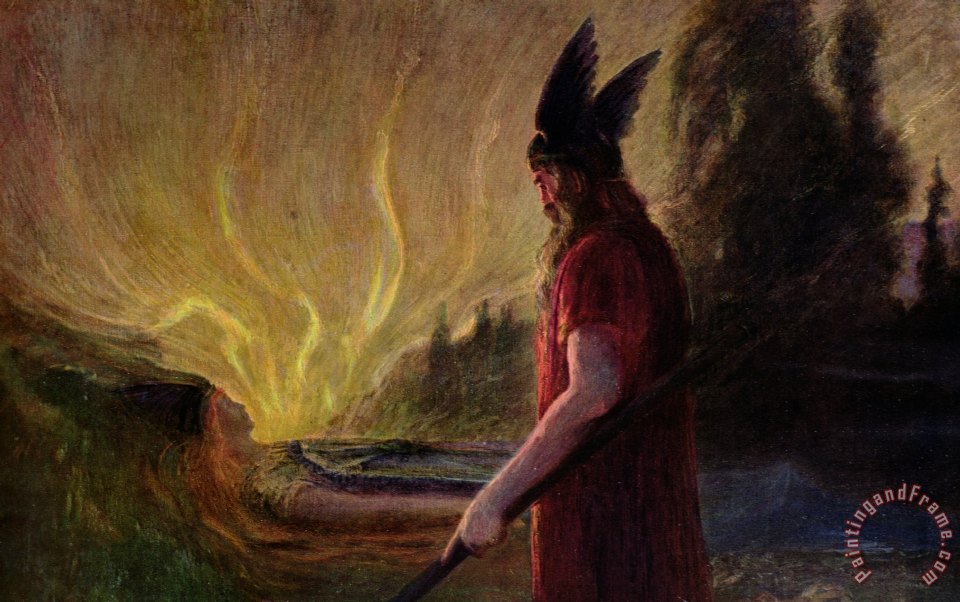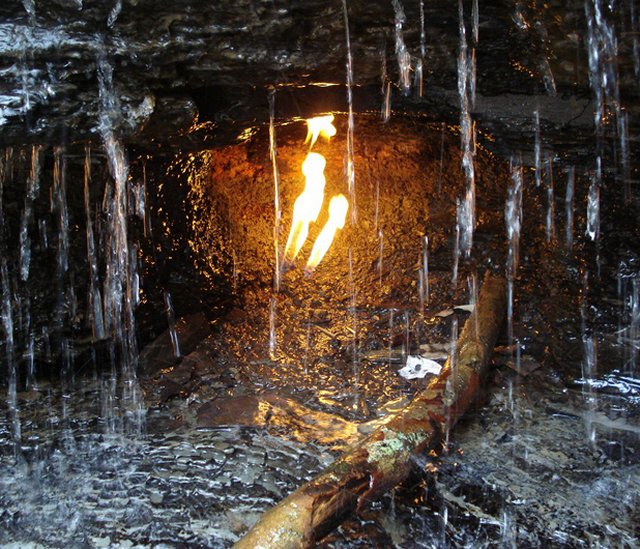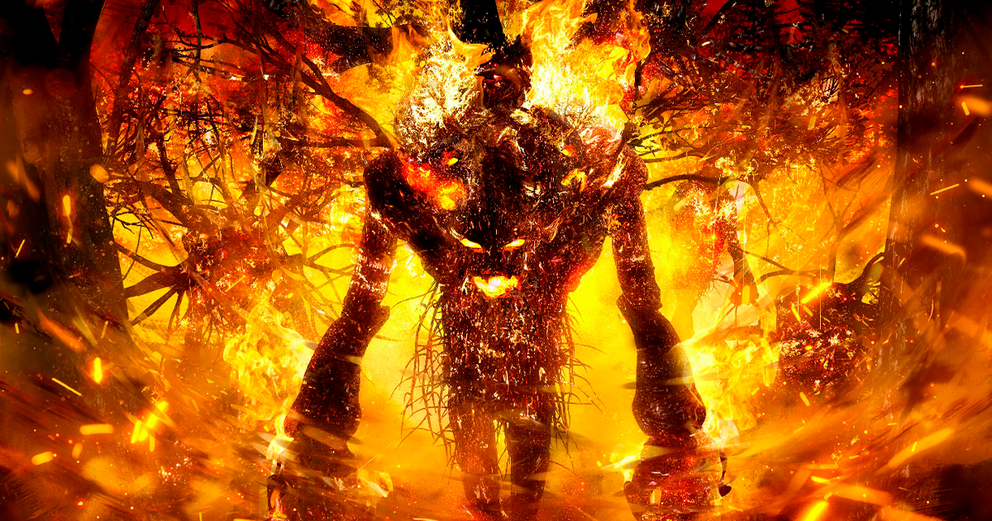
All about Surtr the Greatest Fire Giant of Norse Mythology
Overview One of the Nine Realms in Norse mythology, Muspelheim was a world of elemental fire and heat. In the Norse creation myths, the fires of Muspelheim melted the ice and snow of Niflheim. The realm's water droplets formed the giant Ymir, and the receding glaciers revealed Buri, the progenitor of the Aesir tribe.

Hermann Hendrich Wotan'S Farewell Odin In Flames Norse Mythology Viking Art Vintage
In Norse mythology, the goddess Idun (Old Norse: Iðunn, [ˈiðonː], pronunciation: ee-thoon, "th" as in "the" or "then") is connected to apples and the youth they bring. Idun has attestations in the Poetic Edda, a 13th-century compilation of ancient Norse poetry, and the Prose Edda by Snorri Sturluson, also from the 13th century.

Fire Giant Norse myth, Norse mythology, Norse
Home of the Fire Giants Given the fiery nature of this realm, it would be an easy mistake to assume that there is no life present. However, Muspelhiem is home to fire giants. Unlike other Jötnar (giants) described throughout the Norse sagas, the fire giants seem to stem from one singular originator, Surtr.

H Hendrich Odin leaves as the flames rise painting Odin leaves as the flames rise print for sale
In Norse cosmology, Muspelheim ( Old Norse: Múspellsheimr ), also called Muspell ( Old Norse: Múspell ), is a realm of fire . The etymology of "Muspelheim" is uncertain, but may come from Mund-spilli, "world-destroyers", "wreck of the world". [1] [2] Narrative

Vikings flames by thecasperart Norse Pagan, Norse Mythology, Viking Art, Viking Warrior, Up
In the beginning, according to one tradition, the warm air from this region melted the ice of the opposite region, Niflheim, thus giving form to Aurgelmir (Ymir), the father of the evil giants. Sparks from Muspelheim became the Sun, Moon, and stars.

Yggdrasil is dead Svartalfheim lives By Jordi Rapture Arcane Trickster, Eternal Flame, Norse
Valhalla ("Hall of the Slain") is the afterlife realm in Norse mythology for fallen heroes selected by Odin's Valkyrie to become members of the army that will fight against the forces of chaos at Ragnarök.The concept of Odin's Hall seems to have developed from an earlier vision of a warrior's afterlife as a battlefield. The name Valhalla comes from the Norse Valholl, with holl.

Natural Eternal Flames Evoke the Legend of Bellerophon, Pegasus and the Chimaera Stock Photo
The eternal flame can represent solar light, or a deity's eternal presence. It can symbolize the possession of knowledge, or play a part in ancestor veneration. The legendary flames of antiquity were sometimes naturally occurring fires of natural gas leaks or coal vents, and early human-made ones were fueled by wood or oil.

Who Are Gods of Fire in Norse Mythology? Norse, Norse mythology, Mythology
Norse Mythology refers to the Scandinavian mythological framework that was upheld during and around the time of the Viking Age (c. 790- c. 1100 CE). Complete with a creation myth that has the first gods slaying a giant and turning his body parts into the world, various realms spread out beneath the World Tree Yggdrasil, and the eventual destruction of the known world in the Ragnarök, the.

Norse Rune Fehu. Wealth, Creativity, Passion, Fire. Rune Fehu is Associated with the
The Eternal Flame was a mystical, inextinguishable fire from which the Fire Demon Surtur drew his power. Over 5,000 years ago, Odin battled Surtur in an attempt to prevent him initiating Ragnarök, the fated destruction of Asgard. Odin successfully incapacitated Surtur, banishing him to Muspelheim and bringing the Eternal Flame back to Asgard, sealing it in his vault, where it was guarded by.

Hermann Hendrich Odin Leaves As The Flames Rise Norse Mythology, Viking, Wotan Painting
52-Greek Mythology: An Eternal Flame Previous Next 52-Greek Mythology: An Eternal Flame Two love stories from Greek mythology.because those go so well. The first is the story of Narcissus and Echo, which was doomed from the moment one jumped out of the bushes at the other for a non-consensual hug. The second story is of Orpheus and Eurydice.
:max_bytes(150000):strip_icc()/as-the-flames-rise-wotan-leaves--1906-804488808-595bc1cb3df78c4eb6881df0.jpg)
Odin Ruler of the Norse Gods
Introducing Norse mythology The story of Gylfaginning begins with King Gylfi of Sweden travelling to Ásgarðr (Asgard) disguised as an old man named "Gangleri" to ask the Æsir questions about the universe.

Vesta The fire Goddess by AntonellaB on DeviantArt
1. Hela doesn't set Ragnarok in motion Hela (or Hel as she's sometimes known) isn't the cause of Ragnarok in Norse mythology, although she definitely plays a role. She is the goddess of the.

A Viking Flame Reborn Ancient origins, Vikings, Fire giants
Eternal Flames: Geologists Investigate Ancient Myths to Know More about Modern Fuel Another Classical author, Pausanias wrote about a gold lamp in the Temple of Minerva Polias in Athens.

Pin by Esteban Salaver on Nachos Picantes Dark fantasy art, Demon art, Fantasy monster
Extinguished flames Eternal fire at Nymphaion sanctuary in southern Illyria. Placed around the lower Vjosë/Aoos river near ancient Apollonia and present-day Selenica, Albania, the area was occupied by Illyrians since before archaic colonial times, and the site was likely already a place of worship because of its peculiar physical properties. [6]

Mythical 'Eternal Flames' Of Ancient Worship Reveal Their Secrets
1. Niflheim - Realm of Frost, Ice, Snow, and Mist. Elivagar and gjol flow out into the abyss. 2. Muspelheim - Realm of Fire. 3. Asgard - Realm of the Aesir. Role model for Midgard. travelling between worlds on the bifrost.

Surtr Norse mythology's giant god of fire and apocalypse Nexus Newsfeed
The Power of Fire in Norse Mythology In Norse mythology, fire is seen as a force of creation and destruction. It is a symbol of both life and death, and its power is often associated with the gods. Fire is capable of transforming and renewing the world, making it an important symbol of change and transformation.